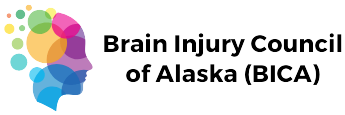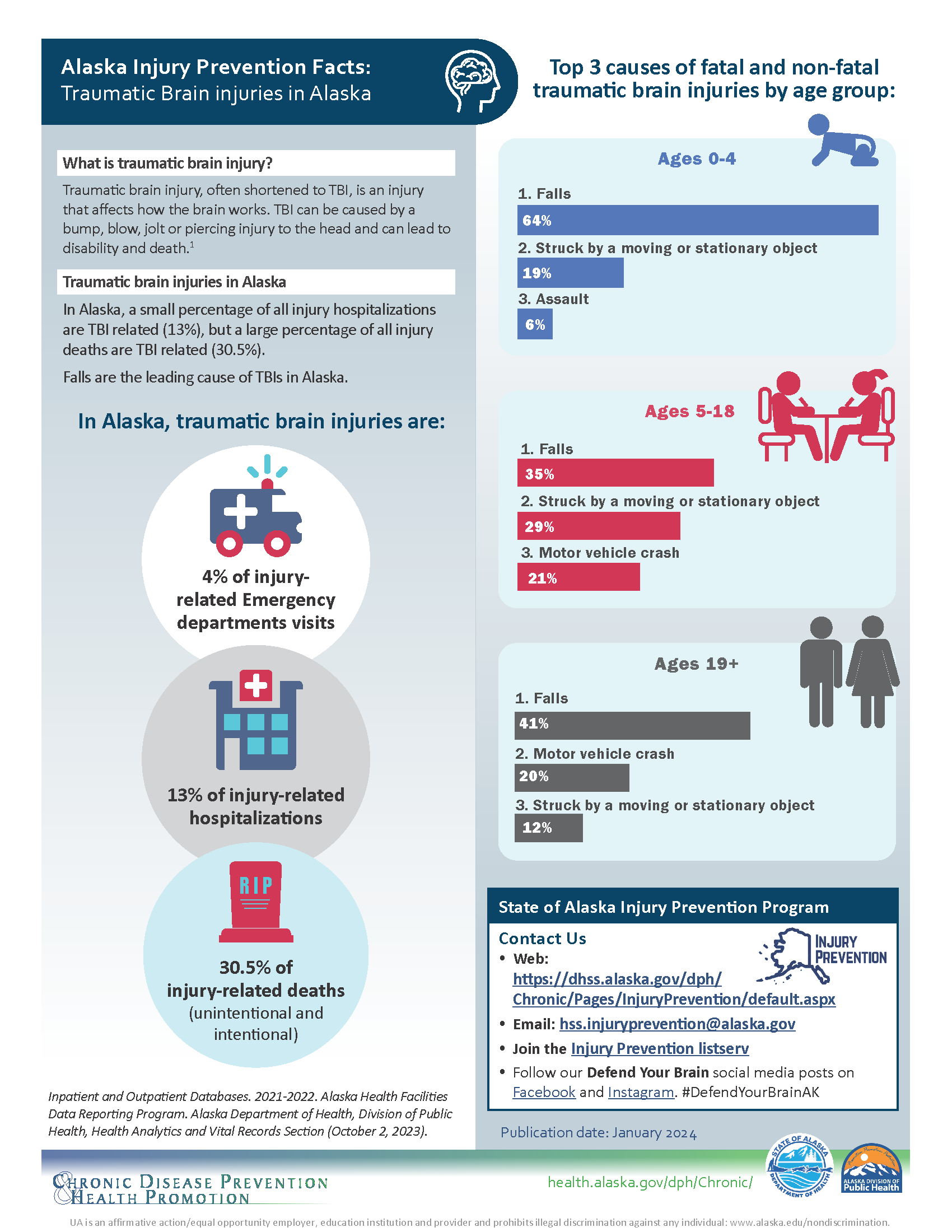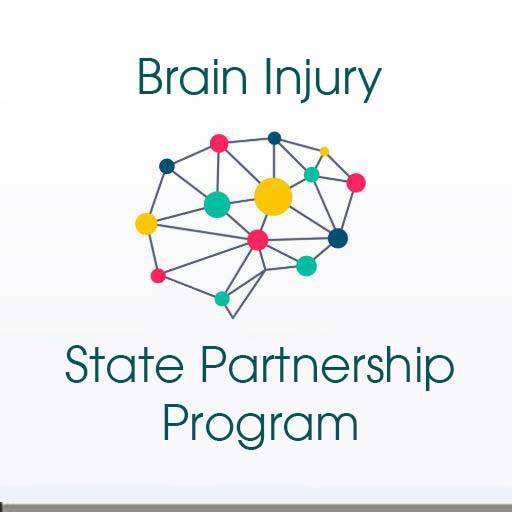Brain Injury State Partnership Program
About the Brain Injury State Partnership Program
The overall goal of this project is to increase capacity in Alaska to provide a continuum of care for individuals with brain injury and their families across the lifespan with services which are culturally responsive, person-centered, comprehensive and coordinated.
FY22-26 Program Objectives:
- Facilitate cross-systems collaboration involving a variety of stakeholders to identify brain injury service needs and barriers to independent living and person-centered care, and advise the State on overall systems planning;
- Determine the current TBI prevalence in Alaska, as well as the current state of brain injury services, including barriers to appropriate care;
- Facilitate implementation of the Alaska 5-Year State Plan for Brain Injury and update annually;
- Facilitate stakeholder engagement, with assistance from mentor state(s), in a process to inform the design and implementation of a TBI State Registry; and
- Expand capacity to screen and identify Alaskans with brain injury and provide evidence-based medical care.
This project was supported, in part by grant number 90TBSG0022-01-00, from the U.S. Administration for Community Living, Department of Health and Human Services, Washington, D.C. 20201. Grantees undertaking projects with government sponsorship are encouraged to express freely their findings and conclusions. Points of view or opinions do not, therefore, necessarily represent official ACL policy.
Alaska Traumatic and Acquired Brain Injury (TABI) Advisory Council
- ACL Grant & Federal Requirements
The federal guidance for the advisory council is as follows:
The advisory board or council provides an opportunity to ensure a variety of stakeholders participate in determining the needs of individuals with TBI, their families, and support systems. It creates structure for statewide cross-systems collaboration, which is essential for systems change work. All grantees are required to establish and/or maintain an advisory board within the lead state agency.
TBI advisory boards or advisory councils should include the following in accordance with and in addition to the mandates of 42 U.S.C., § 300d–52, and in alignment with ACL's commitment to independent living and person-centered planning:
- Membership that is at least 50 percent comprised of people with TBI (i.e. survivors)
- Family members of people with TBI
- Center for Independent Living/State Independent Living Council representation
- Aging and Disability Resource Center representation if one exists in the state
- Protection & Advocacy agency representation
- Long-term care ombudsman representation
- NIDILRR-funded TBI Model System Center representation if one exists in the state
- Voting MembersVoting members include TABI survivors, family members, medical providers, and representatives of the following agencies and organizations:
- Access Alaska
- Alaska Native Tribal Health Consortium
- Daybreak
- Disability Law Center
- Division of Vocational Rehabilitation
- Fairbanks Reentry Coalition
- Helmets on Heads
- Katmai Eye
- Maniilaq
- Providence Alaska Medical Center
- SERRC
- Shepherd Center
- Southcentral Foundation
- Southeast Alaska Independent Living
- State Long Term Care Ombudsman
- Statewide Independent Living Council
- Stone Soup Group
- Non-voting MembersNon-voting members include TABI survivors, family members, medical providers, and representatives of the following agencies and organizations:
- Alaska Mental Health Trust Authority
- Concussion Legacy Foundation
- State of Alaska Division of Public Health, Chronic Disease Prevention & Health Promotion
- State of Alaska Senior & Disability Services
- University of Alaska Anchorage
- StaffLucy Cordwell, UAA CHD, Brain Injury Program Coordinator/Research Professional, lkcordwell@alaska.eduSondra LeClair, UAA CHD, Community Services Director; sleclai1@alaska.edu
Patty Raymond Turner, UAA CHD, Brain Injury Council of Alaska Coordinator; paraymond@alaska.edu
Alaska State Plan for Brain Injury
The FY26-30 Alaska State Plan for Brain Injury was finalized in September 2025. Thank you to everyone who contributed to the plan and provided public comment.
The State Plan is a document for everyone in Alaska. There is not one agency responsible for the completion of the plan. Instead, it explains where the greatest needs for improvement are. It is designed to be used by all agencies in the state to show where they could prioritize their efforts.
The full FY26-30 State Plan for Brain Injury is available for download here.
Past State Plan:
The full FY21-25 State Plan for Brain Injury is available for download here.
Resources, Training & Data
Resources
2024 Brain Injury Needs Assessment – Summary of Results
Alaska Brain Injury Resource Locator
The Concussion Guidebook for Alaskan Patients and Caregivers
Head Injury ECHO for providers
Southeast Alaska Independent Living, Inc.
Training
Post-Concussion and Traumatic Brain Injury (TBI) Training Series with Amy L. Murphy, DO:
Traumatic Brain Injury by Amy Kolarova, DO and Yevgeniya Sergeyenko, MD, MPH:
-
- Training focused on brain injury as it relates to first responders. Topics covered
include:
- Concussion signs, symptoms and screening
- What to do when symptoms overlap, e.g. alcohol induced memory loss versus post traumatic amnesia
- Agitation management in brain injury and how this differs from other conditions
- How to support individuals with a history of brain injury
- Training focused on brain injury as it relates to first responders. Topics covered
include:
Traumatic Brain Injury and Concussion Materials for Health Care Providers
-
- Includes tools for health care providers when working with adults or children with concussion and brain injury
- Materials for patients about repeated head impacts and what to expect after a concussion
Data












